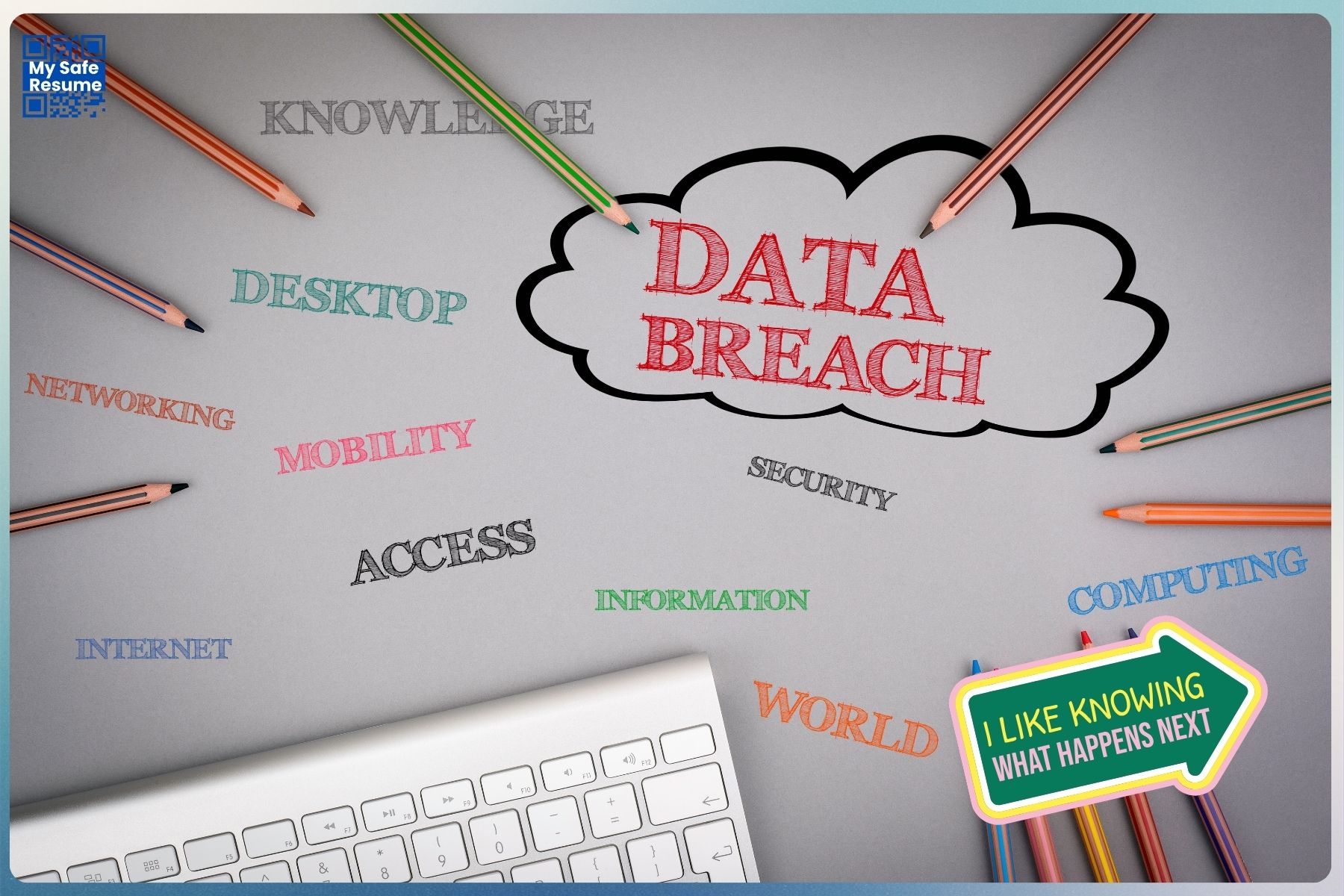In today’s digital age, data breaches have become a significant concern for individuals and organizations. Understanding a data breach’s anatomy is crucial for prevention and recovery. This blog will break down the data breach process, from the initial theft to the aftermath and recovery, including the methods used by hackers, immediate actions to take if your data is compromised, long-term steps to recover, and resources available for victims.
How Data Breaches Occur and 4 Common Methods Used by Hackers
Data breaches typically follow a structured process, starting with the initial breach and terminating in the misuse of stolen information. Here are the key stages and methods used by hackers:
- Reconnaissance: Hackers gather information about potential targets, identifying vulnerabilities in systems or networks. This can involve social engineering, scanning for open ports, or researching company employees.
- Exploitation: Once vulnerabilities are identified, hackers exploit them to gain unauthorized access. Common methods include:
- Phishing: Deceptive emails or messages trick users into providing sensitive information or clicking malicious links.
- Malware: Malicious software, such as viruses or ransomware, infects systems to steal data or disrupt operations.
- SQL Injection: Attackers insert malicious SQL code into a web form to access the database and retrieve sensitive data.
- Credential Stuffing: Using stolen credentials from previous breaches to access other accounts using the same passwords.
- Data Exfiltration: Hackers transfer the stolen data to their servers. This data can include personal information, financial records, or intellectual property.
- Monetization: Stolen data is sold on the dark web, used for identity theft, or leveraged for ransom.
5 Immediate Actions to Take if Your Data is Compromised
Discovering that your data has been compromised can be alarming, but swift and decisive action can help mitigate potential damage. Here are five immediate steps to take if you find yourself in this situation:
- Change Passwords: As a data breach is suspected, change the passwords for all affected accounts. Ensure the new passwords are strong, unique, and not used across multiple sites. Consider using a password manager to generate and store complex passwords securely.
- Enable Two-Factor Authentication (2FA): Adding an extra layer of security, 2FA requires a second form of verification (such as a text message code or authentication app) in addition to the password. Enable 2FA on all accounts that offer it to reduce the risk of unauthorized access.
- Monitor Financial Accounts: Monitor the bank accounts, credit cards, and other financial statements for unusual or unauthorized transactions. Report any suspicious activity to the financial institutions immediately to prevent further damage.
- Report the Breach: Notify relevant authorities and organizations about the breach. This includes contacting your bank, credit card company, or the breached service provider. Report identity theft to Action Fraud (Action Fraud) or National Data Protection Authority.
- Freeze Your Credit: Contact major credit bureaus to place a freeze on the credit. This prevents new accounts from being opened in your name without your consent.
Five Long-Term Steps to Recover from a Data Breach
Recovering from a data breach is a long-term process that involves ongoing vigilance and proactive measures. Here are some critical steps:
- Regular Credit Monitoring: Sign up for a credit monitoring service to receive alerts about any changes to your credit report.
- Identity Theft Protection Services: Consider enrolling in an identity theft protection service, which can help detect and solve fraudulent activities.
- Review Security Practices: Evaluate and improve digital security practices, including regularly updating software, using strong passwords, and avoiding suspicious links or downloads.
- Educate Yourself and Others: Stay informed about common cyber threats and share knowledge with friends and family to prevent future breaches.
- Legal Assistance: If there is significant financial loss or identity theft, seek legal advice to understand your rights and options for recourse.
Five Resources for Victims of Data Breaches
Numerous organizations provide resources and assistance for data breach victims in the UK and Europe. Here are some reliable options:
- Information Commissioner’s Office (ICO): The ICO offers guidance on data protection, reporting breaches, and recovering from identity theft.
- European Data Protection Board (EDPB): The EDPB advises on data protection rights and handling personal data breaches.
- National Cyber Security Centre (NCSC): The NCSC offers resources and support to deal with cyber incidents, including identity theft and data breaches.
- Get Safe Online: This UK-based resource provides information on staying safe online and recovering from cybercrimes, including data breaches.
- Identity Theft Resource Center (ITRC): Although based in the US, the ITRC offers valuable advice and support for identity theft victims globally.
Conclusion
Understanding the anatomy of a data breach is crucial for preventing and responding to such incidents. Recognizing the methods used by hackers, taking immediate action if compromised, implementing long-term recovery steps, and utilizing available resources enables better information protection and more effective recovery from data breaches. Staying informed, vigilant, and proactive is essential for safeguarding digital life.
Resources:



